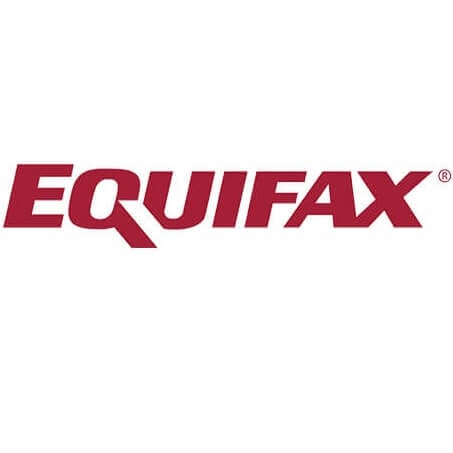6 phishing scams targeting young Canadians (and how not to fall for them)
Gen Z isn’t immune to phishing scams. Find out the most common schemes targeting young Canadians and 7 ways to avoid them. The post 6 phishing scams targeting young Canadians (and how not to fall for them) appeared first on MoneySense.

Young Canadians aged 18 to 34 report that, despite being raised in the digital era—where smartphones were toys before they could even talk—they are now the target of online fraudsters. And, nearly one-third of have taken the bait.
With 41% of scams happening on dating and social apps, why are social-media-savvy Canadians falling victim to them? We’re looking at the top six phishing scams aimed at young Canadians and sharing expert advice from cybersecurity experts on how not to fall for them.
The latest scams in Canada targeting Gen Z
Those stats above come from a new TD survey. It reports that phishing scams are not just targeting older generations. Young people—who spend most of their waking hours online—are being scammed, and it’s happening via email and text messages (74%), phone calls (64%), social media (43%), online ads (29%), job or service applications (25%), and online dating apps (10%).
Those numbers are likely to grow. A TransUnion study shows that digital fraud is on the rise. Suspected online fraud attempts were up nearly 39% in 2023, the third-highest increase among 19 countries. (And that’s just the cases that were reported!)
I spoke with cybersecurity expert Laura Payne, chief enablement officer and vice president of security consulting at cyber security firm White Tuque. I asked about the top scams of the moment that home in on those new to the workforce, online shoppers and daters—three of the top six phishing scams making their rounds across Canada.
Eager-to-please young workers may be easy prey. These scams often involve fake emails from authority figures, like a boss, requesting actions or favours, such as buying gift cards as a “surprise” for company employees. Due to a lack of experience and understanding of expectations, junior staffers may be inclined to comply, leading to unintended consequences like purchasing cards for fraudsters.
“The ‘boss’ sends an email saying, ‘I want to do a nice thing for the company. I want you to go out and buy some gift cards. Don’t tell anybody, it’s a secret,” explains Payne. “I’ve seen it happen more than once, where they go out and buy the gift cards and find out afterwards they’ve been tricked and passing cards onto the scammer.”
Another employment scam Payne warns about is one-off gig jobs, where people are tricked into completing tasks and not receiving payment. Need another one? Phishing scams aimed at online shoppers carried out via text or email. Payne says that fake delivery notifications lure young Canadians who have online shopping habits, which can lead to inadvertently providing personal information to secure their delivery.
When it comes to online dating, a common con is when fraudsters trick people into sharing intimate photos by pretending to be in a romantic relationship, exploiting their trust to later use the compromising images against them.
How young Canadians are being scammed
Just 6% of young Canadian adults (18 to 34) report not being targeted by scams, and 7% say they’re not worried about getting scammed. But here are the top ways this demographic reported being targeted by fraudsters in 2023:
Scam method Percentage of young Canadians reported being targeted Email/text Message 74% Phone call 64% Social media 43% Online ads through retail or news/entertainment websites 29% Job/service applications 25% Online dating apps 10% Other 4%
And here are the top scams concerning of Canadian adults aged 18 to 34:
Scam type Percentage of young Canadians report being targeted Job-related 19% Investments 15% Emergency (e.g., grandparent calls) 12% Cheque deposit 12% Mortgage 8% Donation 8% Romance 7%
Why are tech-savvy Canadians falling for phishing schemes?
Although young Canadians are digitally adept and generally aware of the dangers of phishing and financial fraud, Sophia Leung, senior vice president and head of the Protect Platform at TD Bank, says the lack of awareness around fraud can make it challenging to identify the attempts at phishing.
“Our survey found that 46% of 18- to 34-year-olds in Canada have not taken any measure to educate themselves on fraud protection in the last year,” she says. “So, despite their strong predisposition towards understanding technology, it’s essential to stay informed about how financial fraud could affect you.” Essentially, being a savvy user of technology doesn’t protect you against fraud or phishing.
Why? It’s often an emotional response that seals the scam. Payne explains that fraudsters aim to elicit an emotional reaction from the target, or what she calls an “Oh, no!” or “Oh, yes!” and fearful or excited reactions from you. While people are generally more cautious about negative threats, they overlook red flags in exciting situations. It could look like a job offer asking for an upfront investment. Or being told to keep information confidential at work. Another example is a new relationship that later reveals sinister downsides.
“If somebody is trying to get you emotionally engaged,” that may be a sign of a scam or phishing, says Payne.
Equifax Complete Protection
Equifax Complete Protection is a credit and cybersecurity protection service designed to help Canadians spot the signs of identity fraud faster.
- Provides daily credit monitoring and alerts
- Scans for your personal data on the dark web
- Social media monitoring by industry leader ZeroFox
Subscription price: $34.95 per month
Who is behind phishing scams?
Cybercrime is an entire industry unto itself. “If it were a country, it would have the third largest GDP in the world behind the U.S. and China,” says Payne. “It’s massive. It’s like a supply chain,” says Payne. (GDP stands for gross domestic product, which measures the production of goods and services produced in Canada.)
She explains that these criminals create phishing schemes to sell to others. They hire “employees”—similar to how call centres operate—where they’re doing a job for a paycheque. This is the typical structure of most phishing scams; it’s a systematic operation with multiple layers profiting at different levels. Each level takes a cut from every dollar acquired. It’s not about personal vendettas, Payne explains; it’s an en masse phishing business model. In more targeted phishing scams like catfishing or extortion, the fraudsters are motivated by financial gain, much like anyone engaging in criminal activities for profit.
7 ways to protect yourself from fraud
From being overly lax with your devices and online banking transactions to too-good-to-be-true job offers, you may be vulnerable. Here are six tips to reduce your risk of falling victim to the latest scams.
- Don’t share sensitive info on dating apps: According to Payne, the best approach is discretion: “Until you’ve met the person face to face, don’t share anything you wouldn’t [typically] share with someone else—or with your grandma.” That includes intimate photos, banking info, ID numbers, etc.
- Be wary of suspicious job offers: Be cautious with pay-to-play scenarios, as they are uncommon in the Canadian workforce. Young people may be eager to please and not recognize when something’s off. When in doubt, ask a senior staffer or trusted family member when being asked to buy something for work.
- Be a savvy online shopper: When using marketplace sites like Facebook Marketplace, prioritize safety. Exchange goods in the daytime and only after receiving payment.
- Keep devices updated and protected: Ensure basic security measures like anti-malware, multi-factor authentication (especially for email and other privacy-sensitive accounts), and device updates to prevent technical issues. People think iPhones are magical phones that don’t have security issues, but they are computers and can be compromised, says Payne.
- Trust your gut: Does something not feel right? Leung advises paying attention to telltale signs of scams, such as generic messages, incorrect names, using a username or email address to address you, and/or using another language. Spelling is a sign too, but scammers are getting savvy and cleaning things up, so your going with your gut is key.
- Protect financial transactions: Sign up for fraud alerts for your credit cards, bank and investing accounts and on any other account that offers it. While you’re at it, create auto-deposits that skip the need for passwords. Check for yourself, too. Leung says to reconcile receipts with monthly statements for unfamiliar transactions on credit card statements. Be cautious with trial offers that auto-renew, contact the merchant for clarification when in doubt, and communicate with authorized cardholders to track transactions.
- Check your credit: Don’t just check your credit card statements and your chequing account transactions. Check your credit report at least once a year. Look for errors and fix them directly with the credit bureau, not through any third party that promises to do it for you. There are two credit bureaus in Canada: Equifax (1-800-465-7166) and TransUnion (1-800-663-9980).
How to report a scammer
Depending on the situation or scam, talk to someone experienced whom you trust. If it’s work-related, check with a senior colleague, but you can also ask your parents or a close friend. If you think you’re being targeted for fraud or losing money online, contact the police. Even if the police can’t resolve your issue, reporting it helps them gather data to better handle fraud in the future since it often goes unreported due to victim embarrassment.
On that note, don’t be ashamed; report your incident.
Payne says the person taking advantage of you is banking—literally—on you to be too embarrassed to report being scammed. Whether you or someone you know is being conned, approach the situation without shame. That emotion is vital to the fraudster’s approach; reporting it anyway is crucial in fighting phishing.
This Government of Canada page offers helpful information on reporting a scam. Keep detailed documentation like emails, receipts, and web pages and report the incident to the police, The Canadian Anti-Fraud Centre and your financial institutions.
Get free MoneySense financial tips, news & advice in your inbox.
This article is presented by an advertising partner.
This is an editorially driven article or content package, presented with financial support from an advertiser. The advertiser has no influence on the creation of the content.
Read more about fraud and scams:
- Financial fraud in Canada: What to do if your bank account or credit card is compromised
- 10 common crypto scams and how to avoid them
- Why do Canadians keep falling for scams?
- Lost wallet? Here’s how to protect yourself from fraud
- “Can I get scammed through an e-transfer?”—and other questions about protecting yourself from fraud
The post 6 phishing scams targeting young Canadians (and how not to fall for them) appeared first on MoneySense.









































































